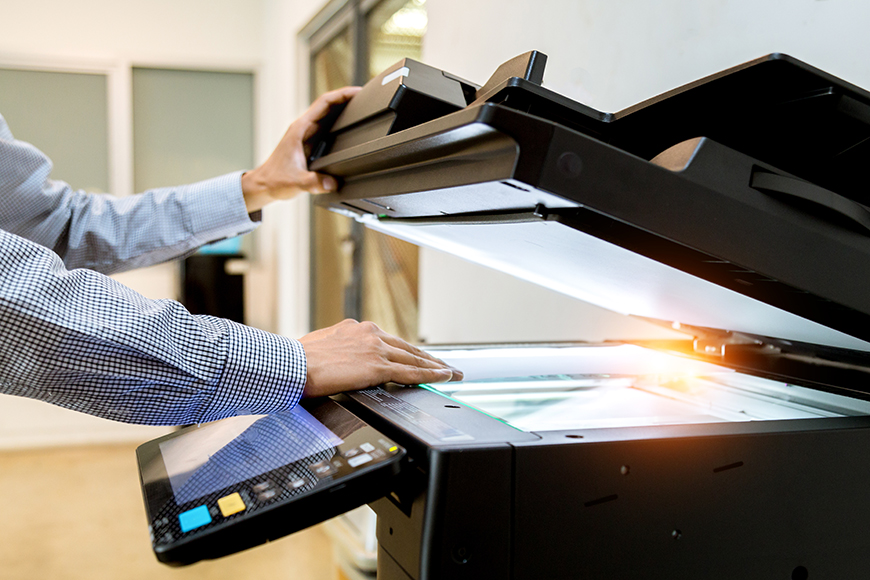How can you confidently bring employees back to the office, and reassure them they’ll be safe at work? Over half of office workers are concerned about catching COVID-19 when they return to working onsite, according to an Eagle Consulting survey from the spring of 2020.
The vast majority will be returning to open office spaces; the commercial real estate giant JLL reports that 70% of U.S. offices now have open floor plans, and many utilize the desk-sharing arrangement called hot-desking. Not only does the absence of walls and privacy potentiate the spread of an airborne disease like COVID-19, but the sharing of desks and spaces can expose employees to more surface contaminants than if they had individual space. While offices can’t simply revert to a traditional walls-and-cubicle structure overnight, office and facilities managers can take special steps to counter the virus-spreading nature of the modern office environment – and increase their employee’s sense of comfort and confidence.

Office safety beyond masks and hand hygiene
The good news is that the same survey showing a concern about returning to the office also indicated that 71% of your workers feel sure you can safeguard their health at work – but their expectations are high. The majority will be looking for ample protective supplies, from masks to hand sanitizer, and they’ll also want clear corporate policies on everything from testing to stay-at-home policies for those with symptoms or positive test results
In an unprecedented situation such as COVID-19, inspiring employee confidence amid the inherent uncertainty will require going beyond the expected. Creating, and continually communicating, a robust program of surface cleaning is one way to demonstrate to employees that you are taking every possible effort on their behalf. The latest data-driven cleaning systems allow you to output real-time status reports for up-to-the-minute reassurance.
A high-touch approach to staying safe at work
People are, by now, generally aware that the COVID-19 virus may be picked up by touch, as in interpersonal contact like a handshake. Offices, however, present a wealth of “touch points” that employees may not think of as contributing to virus transmission. Here are five often- overlooked spots that should be regularly, and thoroughly, cleaned, disinfected and equipped with easily accessible sanitizer, wipes, cleaning solution and paper towels:
1. Hot-desking: Share the responsibility for hygiene
Even when not being shared, the average desk plays host to up to 25,000 micro-organisms, as shown in a study from the University of Arizona (and that was before COVID-19). When you’re “hot-desking,” or “hoteling,” employees may be using a different desk everyday – potentially leaving and picking up germs at every new location. Your cleaning staff should be disinfecting shared desks daily. Each desk should come with its own dispensers for disposable wipes and hand sanitizer, and each employee encouraged to use them not only when they arrive but also as they leave, highlighting the necessity of a “we’re all in this together” attitude. (For tips on placing dispensers throughout the office, see page seven of this free guide to better office hygiene.)

2. Keyboards: An opportunity for better hand hygiene
On top of most desks you’ll find a keyboard – either a traditional model, or one attached to a laptop or tablet. That same university research cited above found that keyboards contain 3,295 germs per square inch. Because of the nature of the keys, with multiple sides and surfaces, even wiping down the keyboard may not be sufficient. You can empower keyboard users to keep themselves and their co-workers safer by keeping hand sanitizer at each desk or free-standing dispensers nearby – along with reminders to routinely use it when they are unable to get up to wash their hands with soap and water.
3. Coffee mugs and kitchen areas: Stay safe at work, even on breaks
Coffee and tea may keep you going during the day, but shared mugs should be approached with caution. Encourage employees to bring in a personal mug, and keep it clean themselves. Only provide ceramic mugs for general use if you have a dishwasher and are using it regularly; otherwise, consider paper cups.
You can also enhance general kitchen cleanliness and hand hygiene by installing high-capacity paper towel dispensers, to ensure that employees always have the opportunity to wash their hands or wipe up a spill.
4. Printers and photocopiers: Don’t duplicate the spread of germs
Photocopiers and shared printers may be used hundreds of times a day in the average office, by dozens of different people. Here again, keep wipes and hand sanitizer close by, accompanied by signage prompting their use after each visitor.

5. Restrooms: Handwashing still requires reminders
No matter how thoroughly you clean the surfaces in your restrooms, you may still have a restroom-related hygiene problem. That’s because 15% of office workers neglect washing their hands after using the restroom, according to the Essity Essentials Survey (2018). But you don’t have to let them get away without an obvious reminder. Simple mirror clings – those signs that stick to glass — can be effective reminders to wash hands before leaving the restroom. And by placing free-standing dispensers directly outside the restroom, you’ll provide both a reminder and an opportunity for hand hygiene as workers enter and exit.
Empower employees to help your office find its “new normal”
No two companies are alike when it comes to its office workers hygiene habits or needs – but every company can create a plan that not only keeps employees healthy, but that encourages them to be individually accountable for cleanliness, too. Nothing is more encouraging than providing the support they need, from positive messaging to readily available supplies.
For a more complete overview of practical, affordable steps you can take to find your “new normal,” consult the latest recommendations on office hygiene from the experts at Tork.
Sources:
Best Life Online: The 20 Grossest Places in Your Office
CDC: How COVID-19 Spreads
EHS Today: 54% of US Employees Worry About Workplace Exposure to COVID-19
Essity: Safe at Work: COVID-19 Office Building Toolkit
NY Times: A Quiet Respite in a Bustling, Open Workplace
Tork: Hygiene Issues in the Open Office Environment
Total Jobs: Workplace Hygiene
